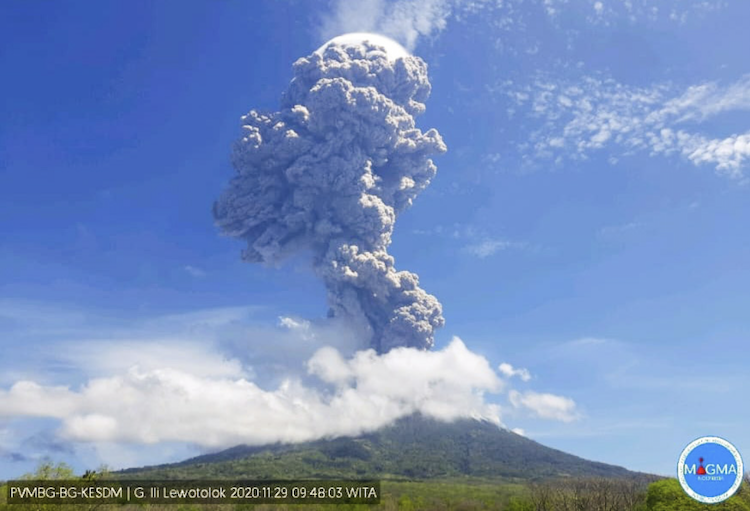The activity of Ili Lewotolok (or Lewotolo) volcano ramped up on 29 November 2020 with a series of eruptions. The largest of these eruptions occurred at about 9:45am local/Singapore time (1:45am UTC) and sent a gas and ash plume more than 5 kilometres (km) into the atmosphere. This powerful eruption was recorded by the infrasound network from the Earth Observatory of Singapore (EOS).

Scientists from EOS use infrasound sensors to remotely characterise volcanic eruptions. Even if Ili Lewotolok volcano is about 2,500 km away from Singapore, the eruption on 29 November produced a clear infrasound signal on the Singapore Infrasound Array. The same array also successfully recorded the eruptions at Anak Krakatau in December 2018 and April 2020. The detection of these eruptions demonstrates the impressive detection capability of this technique.

EOS scientists developed a method to estimate the height of volcanic plumes from infrasound data. By using this method, they estimate that the volcanic plume reached 11 to 13 km above sea level.
This plume height estimate is similar to estimates from satellite imagery. It also agrees with the Volcano Observatory Notice for Aviation (VONA) issued by the Centre for Volcanology and Geological Hazards Mitigation (CVGHM) just after the eruption, which stated that the plume height could be higher than 5 km.
CVGHM maintained the Aviation Colour Code at Orange and raised the Volcanic Alert Level from 2 (advisory) to 3 (watch) on 29 November. Volcanic Alert Level 3 means that volcanic activity is increasing and that more eruptions may take place. Communities are advised to stay at least 4 km away from the volcano. For official updates on the activity of the volcano, the public should follow the updated information from CVGHM.